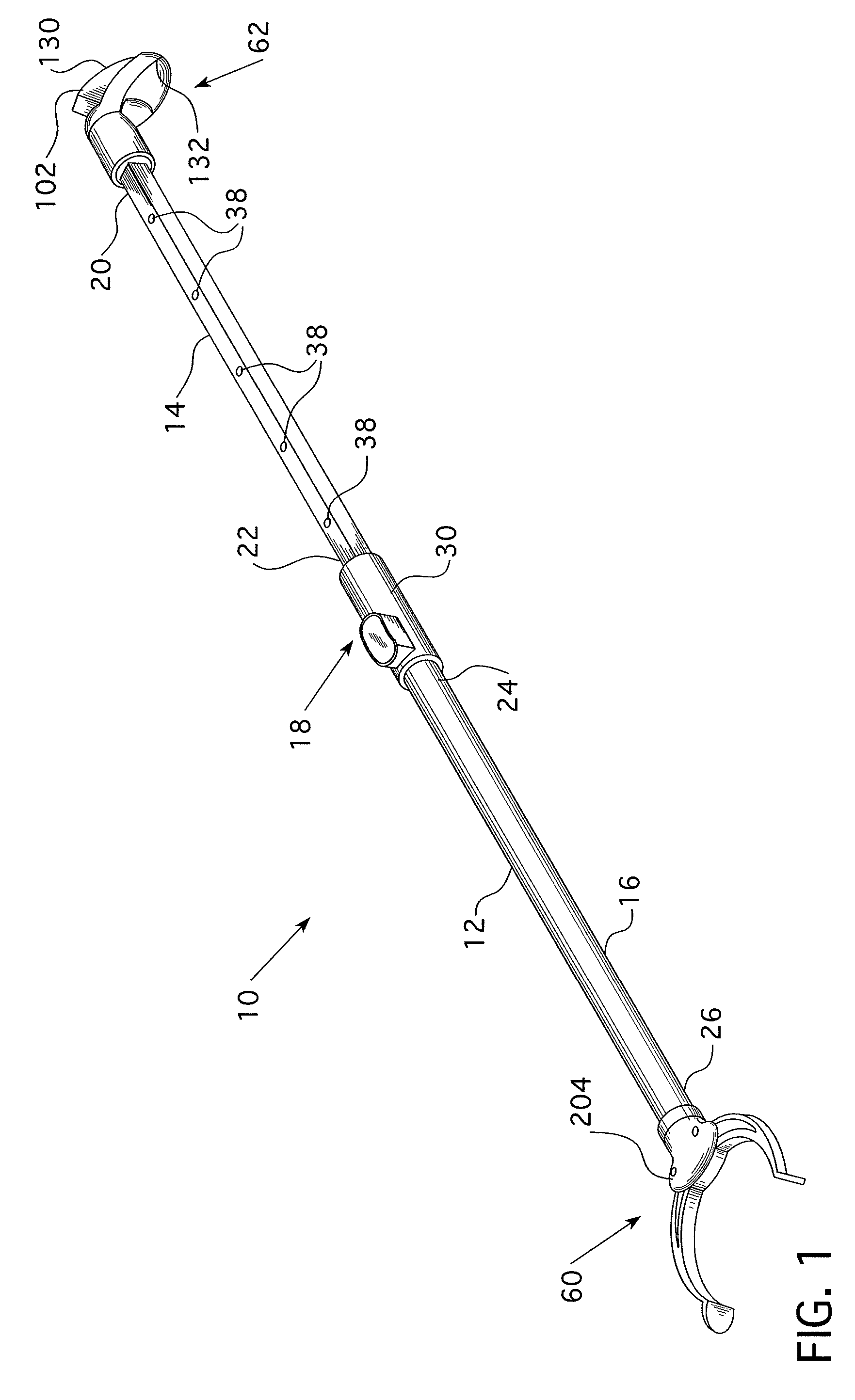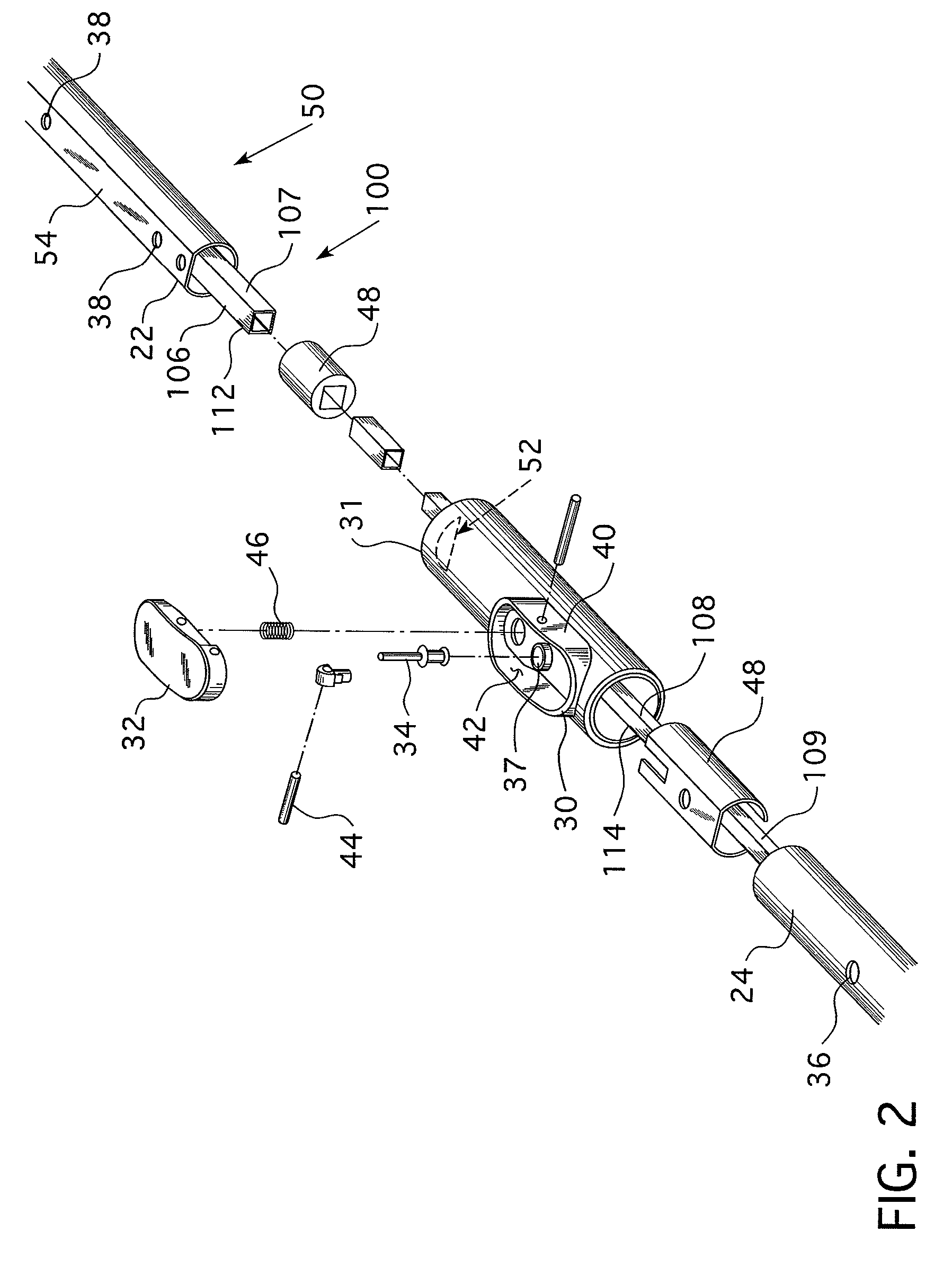Extendable reaching tool
a technology of extension and tool, which is applied in the direction of hoisting equipment, mechanical control devices, instruments, etc., can solve the problems that the twisting motion may not be particularly useful, and achieve the effect of convenient assembly and low cos
- Summary
- Abstract
- Description
- Claims
- Application Information
AI Technical Summary
Benefits of technology
Problems solved by technology
Method used
Image
Examples
Embodiment Construction
[0020]As used herein, “generally linear,” when used to describe the motion of the handle lever second end, includes an arcuate motion over a small arc. That is, when the radius of the arc is substantially larger than the length of the arc, the motion is “generally linear.”
[0021]As used herein, “coupled” means a link between two or more elements, whether direct or indirect, so long as a link occurs.
[0022]As used herein, “directly coupled” means that two elements are directly in contact with each other.
[0023]As used herein, “fixedly coupled” or “fixed” means that two components are coupled so as to move as one while maintaining a constant orientation relative to each other.
[0024]As used herein, the word “unitary” means a component is created as a single piece or unit. That is, a component that includes pieces that are created separately and then coupled together as a unit is not a “unitary” component or body.
[0025]However, as used herein, a “fixed location” means that two or more elem...
PUM
 Login to View More
Login to View More Abstract
Description
Claims
Application Information
 Login to View More
Login to View More - R&D
- Intellectual Property
- Life Sciences
- Materials
- Tech Scout
- Unparalleled Data Quality
- Higher Quality Content
- 60% Fewer Hallucinations
Browse by: Latest US Patents, China's latest patents, Technical Efficacy Thesaurus, Application Domain, Technology Topic, Popular Technical Reports.
© 2025 PatSnap. All rights reserved.Legal|Privacy policy|Modern Slavery Act Transparency Statement|Sitemap|About US| Contact US: help@patsnap.com



